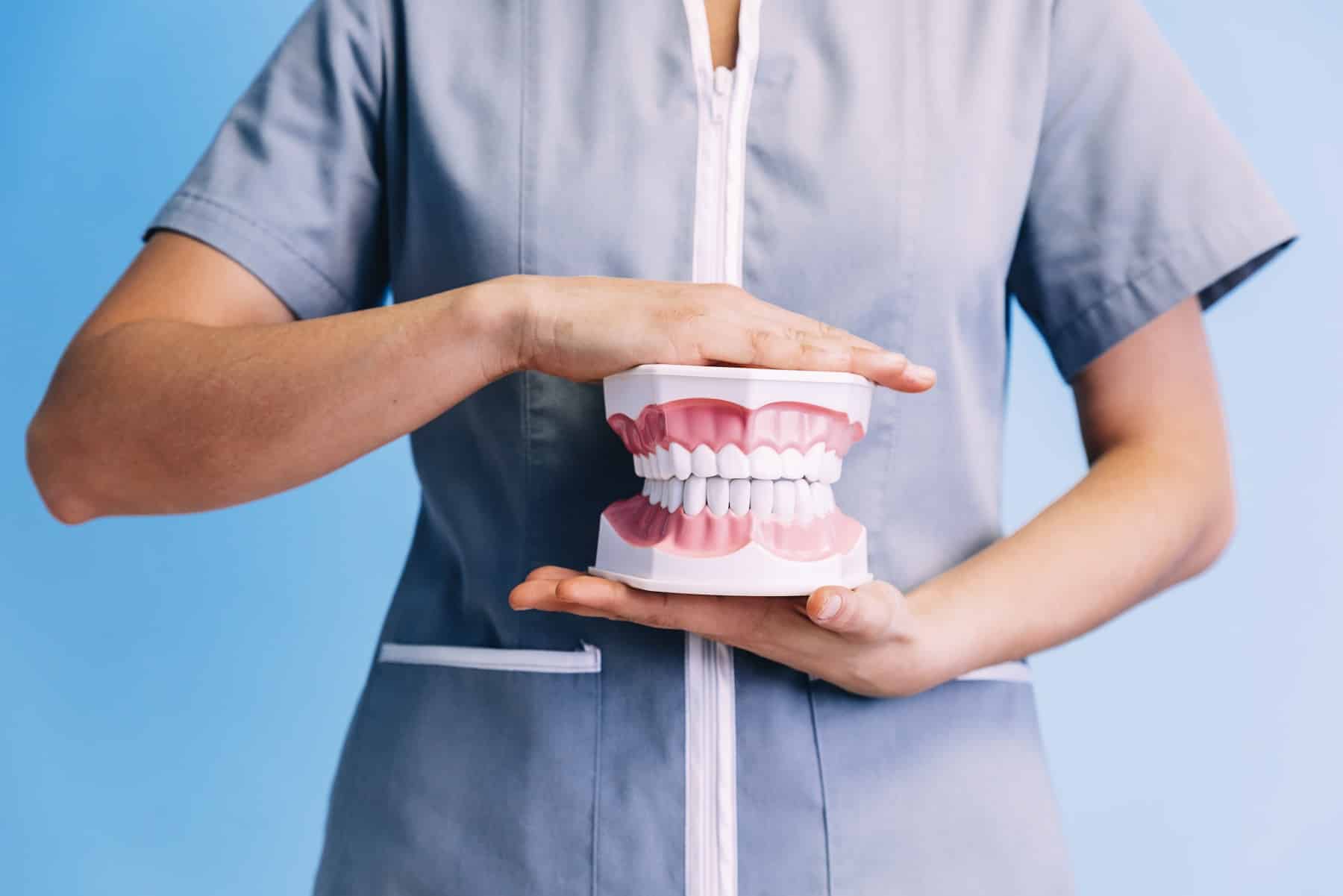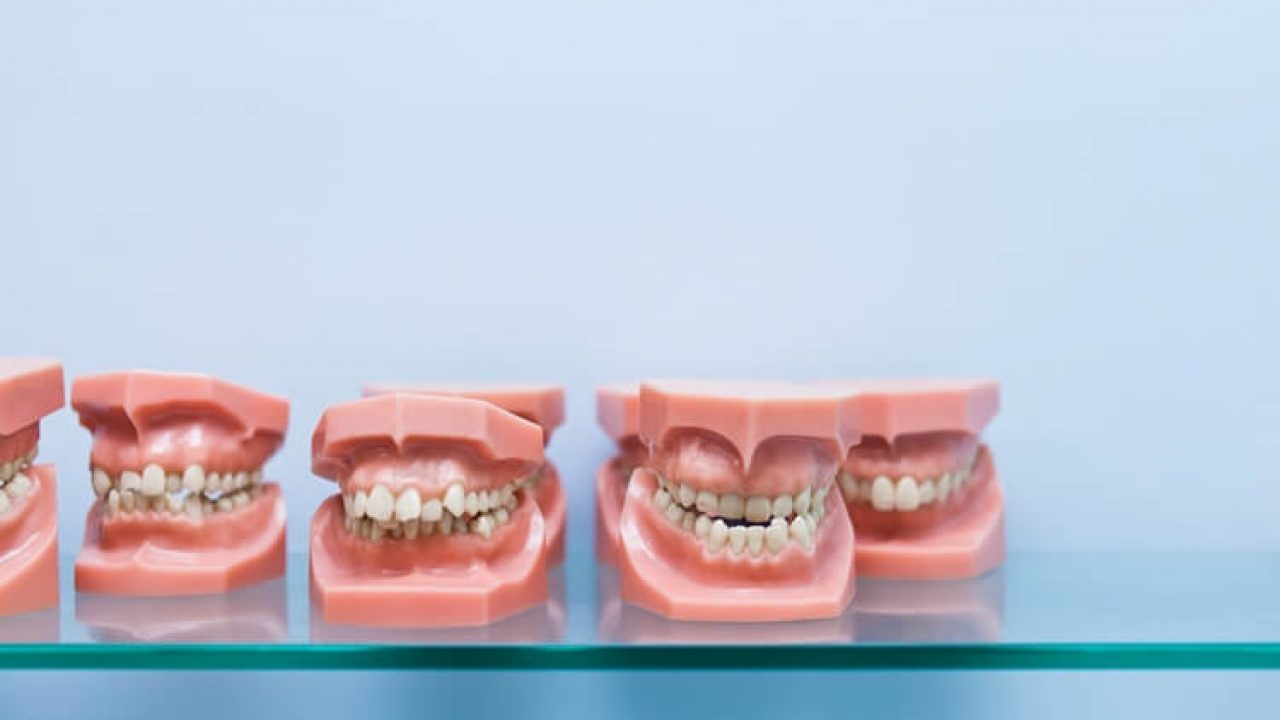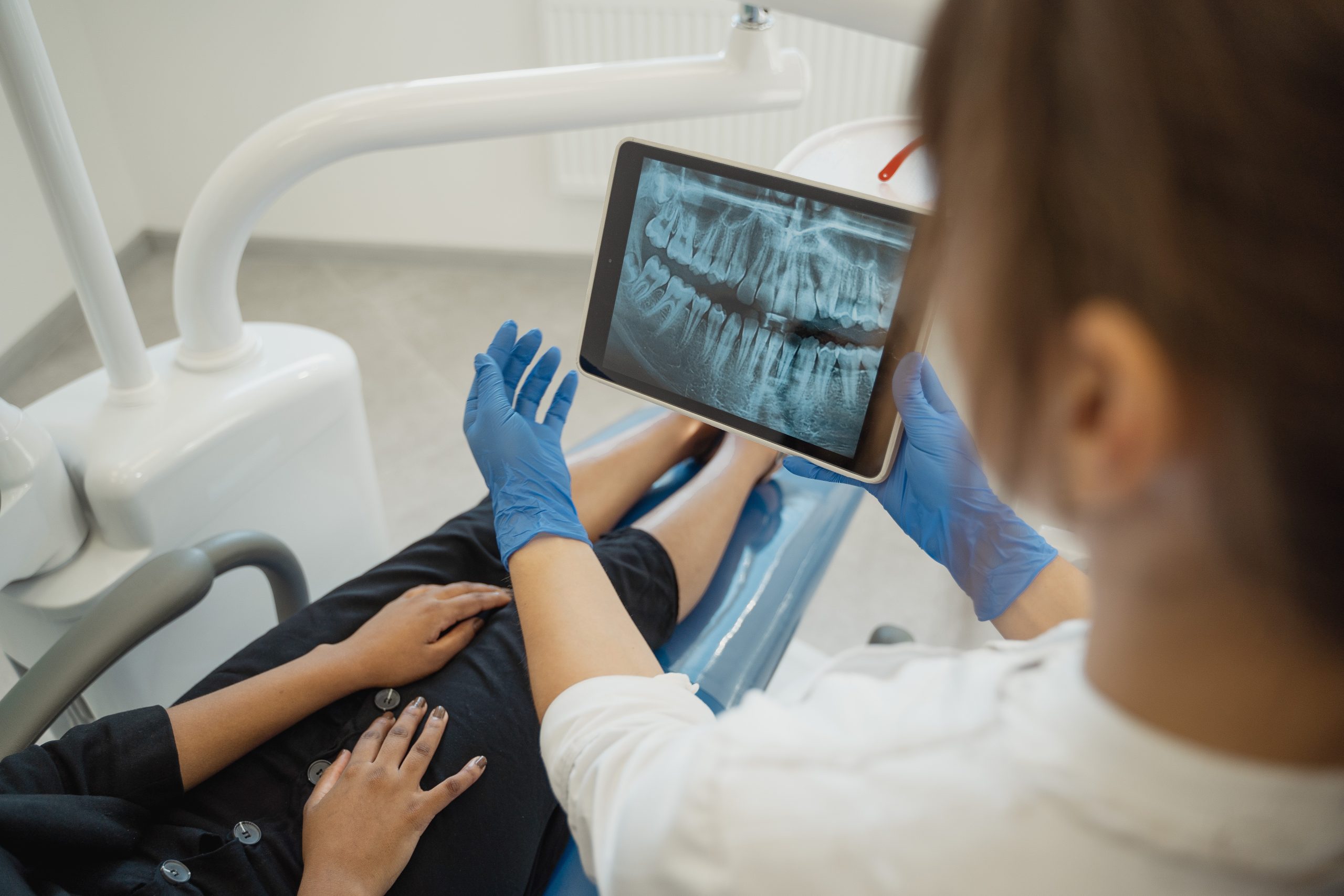Last Updated on: 22nd March 2024, 09:20 am
Dental malocclusion problems are common since not everyone has the perfect bite, and the lower teeth fit perfectly against the upper ones. There are different classes and types of bite problems: overbite vs underbite. Upper teeth can protrude more than the lower ones, or sometimes when biting, the lower teeth overlap the upper ones, respectively.
It is estimated that approximately two-thirds of the US population has a significant malocclusion requiring treatment. Occlusion is the technical term to determine the method of biting, which must be balanced when chewing distributes the force on all the teeth. Now, dental malocclusion is when the position of the teeth and the bone of the jaws present an alteration. This can be evidenced by an incorrect alignment of the teeth and contact between the upper and lower teeth when chewing is irregular.
Table of Contents
What Types of Bites Exist?
It is pertinent to know what types of bites exist when discussing malocclusion. We all should have the correct right bite to prevent oral and facial health problems such as the excessive wearing of the teeth and to make us look good.

Therefore, according to how the teeth fit together and the mouth closes, different types of bites occur:
- Class I: called normoclusion when the upper canine fits between the lower first molar and the lower canine. It indicates that they all fit very properly.
- Class II: the upper canine fits in front of the space of the lower canine and the molar.
- Class III: when the lower canine is displaced forward, associated with a deviation of the jaw.
Names associated with these classes are: crossbite, open bite, overbite, underbite, edge-to-edge bite, and overbite, among others.
There is a difference between overbite and underbite, so how can they be improved and what are the implications?
What is an Overbite?

First, we must understand that the arches are the maxillae, upper and lower, which when in contact while chewing generate an occlusion or the way the two arches are related.
Therefore, malocclusion occurs when this upper arch is in front of the lower one, causing the upper teeth to overlap the lower ones and cover more than half of the lower teeth. This is called an overbite or the retrognathism of class II. On some occasions, the uppers cover the lower completely. According to the American Association of Orthodontists, an overbite usually occurs when you have a small lower jaw or the lower jaw is shorter than the upper jaw.
There are several types of overbites such as horizontal, vertical or deep, and mixed. The diagnosis of the orthodontist or dentist determines which is present at the moment.
What is an underbite?

Class III malocclusion is also called prognathism. It occurs when the lower jaw protrudes into the upper jaw, making it appear that the lower teeth cover the upper ones, causing a misaligned bite.
This misaligned bite sometimes does not represent a major inconvenience; however, when it is serious or protrudes a lot, it creates a bulldog appearance in the mouth and face since the lower jaw extends sharply forward. If such an underbite is not corrected, you risk wearing down your teeth, which can put stress on your jaw joints.
What is the Difference Between Overbite vs Underbite?
An overbite and underbite differ mainly in the affected maxilla. The first one is related to the maxilla protruding into the upper jaw, while the other is defined by an extended lower jaw.
Potential risks from a malocclusion
In general, presenting a malocclusion can generate many problems in oral health as when they are very noticeable and cause not only aesthetic deformations but also a greater probability of dental crowding (not enough space for the teeth because they are too big, the jaw did not develop the right size), or poor tooth position. Because of this, people are more likely to display signs and symptoms such as:
- Difficulty chewing
- Enamel wear and tooth fractures
- Difficulty cleaning teeth properly
- Increased risk of cavities, cavities, and gum disease
- Tension in the teeth, jaws, and muscles
- Difficulty breathing at times
- Difficulty or pain when chewing on the face and jaws
- Jaw pain or temporomandibular disorders (TMD)
- Speaking problems
- Low self-esteem
When the malocclusion is greater than 3mm, it can present head and ear pain, functional alterations, and alterations in the development of jaws in children.
What Causes Malocclusion?
Sometimes malocclusion is due to a genetic condition, that is, inherited from one’s parents. It can also be associated with the inadequate development of the upper or lower jaws or a difference in the size of the jaw with respect to the tooth. Certain birth defects, such as a cleft lip or palate, can also cause malocclusion.

Other causes for a malocclusion or defective occlusion:
- Childhood habits such as thumb sucking, pressing the teeth with the tongue, using a pacifier after the age of 3, and drinking a bottle for a long time
- Extra teeth, impacted, missing, or abnormally formed
- Ill-fitting dental fillings, crowns, prostheses, retainers, and braces
- Malalignment of fractures of the jaw after a serious injury
- Tumors of the mouth and jaws
Some factors may be catalysts that lead to a malocclusion:
- Skeletal discrepancies: problems in the size of the jaws
- Dental discrepancies: alterations in the size of the teeth in relation to the jaw bones
- Functional alterations: the existence of harmful habits
Can Invisible Aligners help?
Invisible aligners are a treatment option for people with a minor gap problem or mild to moderate crowding. People with severe crowding or alignment issues such as an overbite, underbite, or even crossbite may need more complex treatment than invisible aligners offer.
How is the malocclusion treated or corrected?

Initially, the dentist must make a diagnosis through X-rays, resonances, and other diagnostic methods that help determine what type and class of malocclusion presents.
Subsequently, the diagnosis will reveal the degree of crowding. If there are problems with the gums or caries that cause the malocclusion, the age of the patient and the type of facial aesthetics will determine what type of treatment should be performed and for how long.
Although overbite and underbite treatments are similar, they are different in conditions and the area to be corrected.
Treatment of an Overbite
In orthodontics, there are different methods to manage an overbite. The type of treatment differs between adults and children. In the case of children, it is possible to use:
- Growth modification devices or palatal expanders during growth spurts to reposition the jaw.
- Suspenders or braces to slowly move all the teeth into the correct alignment. You can choose between metal or ceramic. Braces have brackets that provide constant and consistent pressure, gradually forcing the teeth to straighten and realign perfectly in the jaw.
- Extraction of milk teeth or permanent teeth to make room for permanent teeth.
- Retainers to keep teeth aligned after orthodontics.
In the case of adults, it is possible to perform the following procedures:
- Suspenders or braces to slowly move all the teeth or only the affected teeth into the correct alignment. You can choose between metal or ceramic. Braces have brackets that provide constant and consistent pressure, gradually forcing the teeth to straighten and realign perfectly in the jaw.
- Surgery to correct the alignment of the jaw. When the overbite is severe, it is an excellent option, especially when the malocclusion involves a misaligned jaw. The objective of surgical treatment is to modify the size of the jaw to align the teeth in the correct position.
- Extraction of teeth allows the remaining teeth to have more space.
Treatment of an Underbite
The treatment of mandibular prognathism depends upon the diagnosis. It is most important to detect the problem at the earliest possible stage; the type of treatment also depends on age:
- Interceptive orthodontics: this is used for a severe degree of the problem in children. Itt is applied for a mixed dentition, that is, when permanent and milk teeth coexist in the mouth.
- Dental appliances: fixed or removable appliances modify bone growth to attain the correct direction and desired alignment.
- A reverse pull face mask is a device used to slow the growth of the lower jaw and allow the maxilla to catch up. This treatment option is feasible for children whose jaws are still developing.
- Corrective orthodontics: once the interceptive orthodontics is finished, you can continue to improve dental alignment. Currently, there are braces, invisible aligners, lingual orthodontics, etc.
In adults, the treatment changes a little since it is no longer possible to modify the growth of the bone structure:
- Orthodontic + orthognathic surgery: usually, first orthodontic treatment is carried out, and later, the dentist performs surgery known as a mandibular osteotomy.
- Corrective orthodontics: In other cases, prognathism can be corrected through orthodontic treatment for adults using metal brackets, transparent aligners, sapphire brackets, etc.
- Surgery: used to shorten the lower jaw or lengthen the upper jaw as a treatment option for underbites. The surgeon breaks the jaw, removes some bone tissue, and then repositions to line up properly. There are two types: regular orthognathic surgery and Le Fort osteotomy.
- Upper jaw expander: When the growth rate of the upper jaw does not match that of the lower jaw, an expander alters its shape and size to achieve proper alignment.
Recommendations
It is important to brush and floss your teeth every day, as well as make regular visits to the general dentist. Plaque builds up on braces, or they can permanently mark teeth or cause cavities if not removed properly.
A retainer will be needed to stabilize the teeth after wearing braces.
Contact us
If you have any questions about this or other topics, you can contact us at Channel Islands Family Dental as well as our page on Facebook. We look forward to your visit and we will make a timely diagnosis. Our dentists in Oxnard, Santa Paula, Ventura, Newbury Park, and Port Hueneme will be able to guide you toward the best treatment to take care of your health and give you back your best smile.
Bibliography
1. Cleveland Clinic. Overbite. Published on Mar 01, 2021, (accessed on Oct 24, 2022). Available in: https://my.clevelandclinic.org/health/diseases/21473-overbite
2. Kapner M. Malocclusion of teeth. National Library of Medicine, Medline Plus. Published on Jan 24, 2022, (accessed on Oct 24, 2022). Available in: https://medlineplus.gov/ency/article/001058.htm
3. NWPH Staff. Overbite vs. Underbite: Causes, Risks, and Treatment Options. NWPHDental.net. Published on Feb 20, 2022, (accessed on Oct 24, 2022). Available in: https://www.nwph.net/overbite-vs-underbite#1
4. Gutierrez L. What is an overbite, what problems does it cause and how to correct it?. Dentaly.org. Updated on Jul 08, 2022, (accessed on Oct 24, 2022). Available in: https://www.dentaly.org/es/orthodontics/malocclusion/overbite/
5. Cirino E. Everything You Need to Know About Treating an Underbite. Healthline. Published on Jan 26, 2019, (accessed on Oct 24, 2022). Available in: https://www.healthline.com/health/underbite
6. WebMD. Overbite vs. Underbite: What’s the Difference? consulted on Oct 24, 2022. Available at: https://www.webmd.com/connect-to-care/teeth-straightening/overbite-versus-underbite


